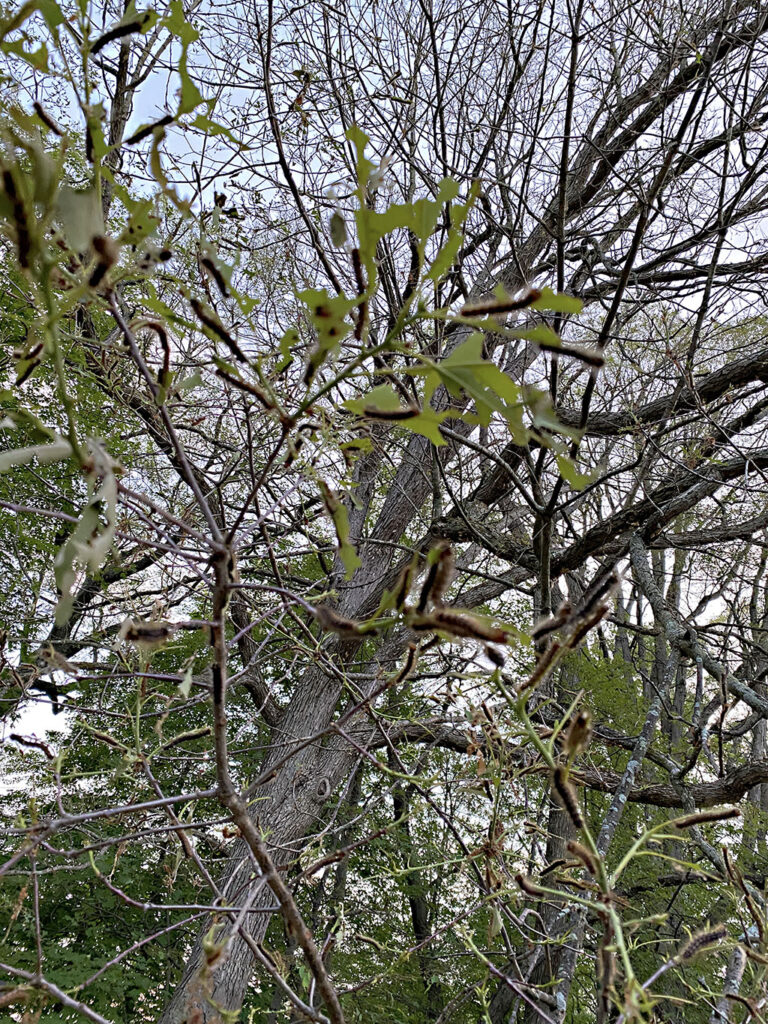“I think it’s my word. When I was first told about OCD, I was told that these thoughts are called intrusives. But I actually heard the word invasives for some reason. And that is what it’s like for me. It’s like there’s an invasive weed that just spreads out of control. You know, it starts out with one little thought and then slowly that becomes the only thought that you’re able to have, the thought that you’re constantly either forced to have or trying desperately to distract yourself from.”
-John Green
Invasive Species
In a very real sense, and in many locations across our solar system, Homo sapiens sapiens is indeed a terrible invasive species. We have migrated to areas unsuited to our natural life, adapted with our technology, and destroyed native environments. There is no more apt definition. Recently, our personal home range has been inundated with another invasive, Lymantria dispar dispar, the European Gypsy Moth. This species was brought to New England from Europe in the late 1800s in a misguided attempt to create a new silk industry! More precisely, the inundation is with Gypsy Moth caterpillars (or larvae), but soon the moths themselves will be playing out their segment of the cycle. This year’s invasion has been particularly bad for reasons that include cyclical increases in population, the COVID-19 pandemic limiting monitoring and mitigation, global climate change, and drought (see global climate change). Gypsy moth caterpillars are capable of completely defoliating an oak tree overnight. Oaks are one of their favorites. Weak trees cannot survive this defoliation and even healthy trees might be killed by two consecutive years of defoliation. At times the carnage is so massive that one can hear the caterpillars chewing on the leaves and their droppings mimicking a continuous rain shower through the woodlands.
The Noble Fight
Duct tape! The matriarch of our household has personally taken up the battle. Her weapons of choice are duct tape, a putty knife, a red Solo cup, and a pool skimmer. Strips of duct tape, placed around the trunk of a tree at about chest height with the sticky side out, can stop the caterpillars from climbing up the trees to devour the leaves. (Healthy trees also respond to the stress by making their leaves more bitter to the caterpillars, thus limiting the destruction.) The caterpillars, thus slowed down, are then scraped off the tree into the red Solo cup using the putty knife. They meet their ultimate demise in a bucket of soapy water. The process has been repeated several times a day for a few weeks and literally thousands of the caterpillars have been thwarted from four Red Oak trees (and one Red Maple) in our yard. These trees, with their ally, will live on strongly to fight another battle. Two of the oaks are quite sentimental to the family as they were planted and nurtured from collected acorns. The pool skimmer is used to dislodge caterpillars who are found at higher altitudes in the trees.
Mendon Ponds White Oak
There are other techniques in this ongoing war. A White Oak in Mendon Ponds Park was completely defoliated (first image) in early June 2021. The tree went from buds in April, to tiny leaves in May, to fully leafed out in late May, to completely defoliated by mid-June. As that tree is part of an ongoing project to photograph leaves through an entire growing season, its June 15 defoliation was devastating. Some research indicated that healthy trees can, and often will, push out a secondary set of leaves in order to benefit from the remaining months of photosynthesis and thus survive to fight another year. Hope for this particular White Oak (and several of its other oak compatriots in the park) was rewarded in early July when the tree did, indeed, refoliate itself as the caterpillars moved into the pupal stage. The second image shows the fresh, young, light-green, leaves on the morning of July 6. They are not as plentiful, or as rugged, as the original leaves, but they will serve to provide the tree with some energy stores to help it through the upcoming winter. It is hoped that the price was not too high and it will be interesting to follow these leaves for the rest of the season.


This morning was also greeted with reports that a virus is sticking the caterpillars due to their high population and proximity, their own pandemic. This virus, NPV or nucleopolyhedrosis), has arrived and is the reason that Gypsy Moth populations collapse, only to return in 8 years or so.
Next up; ???